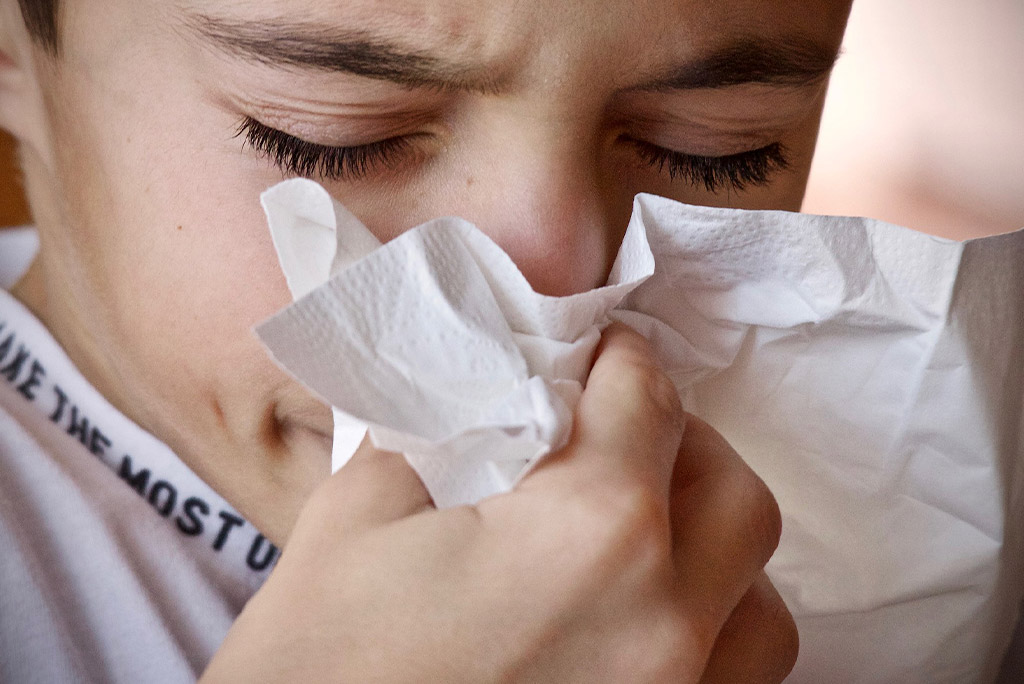 Bronchiolitis is a common viral illness which is seen between late October and March each year. This illness usually begins as a clear runny nose, sneezing, and low grade fever of 101-102 which is followed by a deep-sounding, “wet” or “juicy” cough 2-4 days later. The cough is due to the virus irritating and causing inflammation of the small airways of the lungs [the bronchioles]. In infants less than 1 year of age, the nose congestion and cough can significantly interfere with both eating and sleeping. In addition, bronchiolitis can cause wheezing, breathing problems and even pneumonia.
Bronchiolitis is a common viral illness which is seen between late October and March each year. This illness usually begins as a clear runny nose, sneezing, and low grade fever of 101-102 which is followed by a deep-sounding, “wet” or “juicy” cough 2-4 days later. The cough is due to the virus irritating and causing inflammation of the small airways of the lungs [the bronchioles]. In infants less than 1 year of age, the nose congestion and cough can significantly interfere with both eating and sleeping. In addition, bronchiolitis can cause wheezing, breathing problems and even pneumonia.
There are several different cold weather viruses that can cause bronchiolitis, but the most famous one is RSV [Respiratory Syncytial Virus] as it is well known to cause breathing problems in young infants and is one of the most common causes of hospital admission for infants less than 6 months old. Unfortunately, there are no outpatient medications that treat RSV and since it is a viral illness, antibiotics do not help at all. Your child’s own immune system must fight off this viral illness. We do sometimes use medicines to help with the wheezing or inflammation in the lungs, however, the cough can be expected to last a full 7-14 days.
For older children (typically over 2 years of age), RSV usually causes a simple “winter cold/URI” with lots of clear runny nose, sneezing, coughing, mild sore throat, and hoarse voice. For children with know asthma, RSV is one of the many winter viral illnesses that may trigger wheezing in your child. Again, there is no specific medicine that fights off the RSV virus. We are left treating the symptoms it is causing in your infant or child.
Home Treatments
Home regimens that can help your young infant during an episode of bronchiolitis are the following:
- A cool mist humidifier/vaporizer beside their crib can help thin and loosen the nose and throat secretions.
- Elevating the head of the crib or even allowing your infant to nap or sleep in their carrier placed in the crib can help decrease the coughing fits that can occur due to drainage dripping down the back of their nose into their throat when they are laying down.
- Increasing the amounts of clear fluids [infalyte, pedialyte, or 50% diluted fruits juices], particularly if your infant is taking less of their normal bottles or breastfeeds due to the illness.
- Patting your infant’s back quite firmly several times a day to help break up chest secretions.
Severe Symptoms
The danger signs that your young infant may be getting worse and needs to be seen at Urgent Care or the ER at night or over the weekend are signs that we call “Increased Work of Breathing.” These include:
- Faster Breathing Rate: breathing greater than 50 breaths per minute
- Heavier Effort of Breathing: child’s chest is moving in and out more dramatically than normal
- Retractions of the Chest: when the skin in the lower neck, between the ribs or just under the ribs is sucking in and out in a way you have not noticed before
- Color Change: a change from the normal pink lips and cheeks to a pale, grey or light blue color.
If your child is getting sicker, usually 2 or more of the above signs are noted, you need to call our office or head to urgent care or the ER immediately.
Corinth Family Medicine and Pediatrics
Karri Dutton, MD

